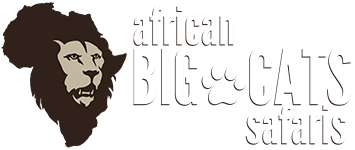Mount Kilimanjaro Packing List
| DESCRIPTION |
PHOTO |
| Clothing Thermal Underwear Depending on the length of your trek, you should bring 4-5 pairs of sports underwear. |
 |
| Base Layer As you approach the upper reaches of the mountain, you will need to wear a lightweight base layer (or next-to-skin layer) over your underwear. |
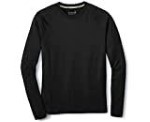 |
| Trekking Shirts In terms of trekking shirts, we recommend 2 short sleeve shirts and 2 long sleeve shirts. Ideal fabric is a breathable, lightweight and quick-drying polyester, merino or nylon. Make sure that your shirts are not cotton. |
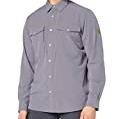 |
| Trekking Trousers These are the hiking pants you’ll wear throughout your Kili trek. Normally they’d be your outer layer for your legs, but for summit night we suggest yet another layer |
 |
| Insulation Layer For the colder stretches on the hike and for summit night, you should bring 1 mid-weight fleece jacket or parka top. This is your second layer, or insulation layer, and should be used in your layering system over your base layer, or indeed as a standalone that you wear over your trekking shirt when temperatures start to drop. |
 |
| Core Jacket or Third Layer Here are the key factors to consider when selecting an appropriate jacket: • Weight and warmth, Waterproofing & Versatility |
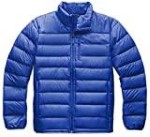 |
| Hard-shell and Rain Gear In addition to these items, we recommend taking with you a hard-shell jacket and some lightweight rain gear. In terms of the hard-shell jacket, we recommend the North Face Resolve (men, women) or similar. For a quick rain cover, you might also want to bring a poncho that sits over your body and daypack. Ideal for the lower reaches. |
 |
| Beanie or Headband A thermal beanie or headband is a must for summit night. You want to keep your head and ears warm. Make sure the beanie fits snug and is suitable for snowy conditions. |
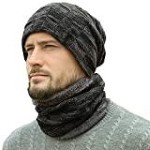 |
| Neck Warmer To protect your neck and face from blistering cold temperatures if the wind picks up, high Sun UV during the mid-afternoons at altitude, or indeed to cover your mouth and nose from dust, we recommend taking either a hiking balaclava or neck warmer. |
 |
| Headlamp A headlamp is the best torch for night hiking as you can have your hands free at all times. You will use your headlamp on summit night (yes, you summit overnight, starting usually around midnight). |
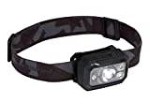 |
| Sunglasses Eye protection is so important on summit night. When the sun starts to rise, the rays bounce off the snow and can cause snow blindness in those without glasses. |
 |
| Inner Gloves & Outer Gloves Do not go for cotton inner gloves as these will restrict moisture transfer. You should also make sure that the gloves provide a good thermal lining and are lightweight. • We cannot stress the importance of having good outer gloves or mitts. Your hands will be the first to start freezing on summit night. Cold hands are super debilitating and painful. The perfect outer gloves provide warmth and are waterproof, without being cumbersome or too bulky. |
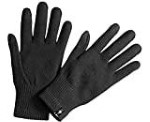 |
| Trekking Poles We recommend using trekking poles as a mandatory hiking accessory on Mount Kilimanjaro, as they offer better balance on trails and reduce stress on joints during ascents and descents. |
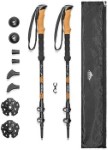 |
| Footwear Hiking Boots There are three key characteristics to look for in a pair of trekking boots. • Fit, quality & use The best way to break boots in is to wear them as often as possible before your hiking date. |
 |
| Trainers or Trekking Sandals Each evening when you reach your camp, the first thing you are going to want to do is to take off your trekking boots, and not have to put them back on until the next day. |
 |
Trekking Socks
It is important that you bring good quality trekking socks. You should avoid cotton or cotton-blend socks as these absorb and retain moisture, keeping your feet damp and making them susceptible to blistering. |
 |
| Thermal Socks On summit night you will need to wear thermal socks. Rag Wool is the best material for thermal socks. Some people go with a polypropylene liner to assist with the wicking process. |
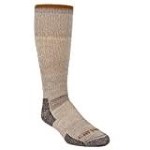 |
| Gaiters Gaiters are made of waterproof material that extends up from your boot to your calve muscle. They are used to keep unwanted materials out of your boots (mud, water, rocks etc.) |
 |
| Duffel Bag Your duffle bag will be carried by your porter who will transport your gear from one camp to the next. Porters carry bags on their head so it is important that the bag is soft and weighs no more than 20kg when fully loaded. It is recommended that you bring a 60litres duffel bag. |
 |
| Backpack In addition to your duffle bag (which is carried by your porter), you will be carrying your own daypack. In your daypack, you should keep all important (sun cream, sunglasses, snacks, water), personal (money, passport etc.) or small breakable items (camera, phone etc.) It is recommended that you bring a 30litres backpack. |
 |
| Important Bag Accessories Rain cover Depending on what time of the year you are hiking, there is a possibility that you will encounter rain on the mountain. You want to avoid getting your daypack wet. A good rain cover is a worthy piece of kit to have as a precaution. |
 |
| Hydration Bladder If you decide to go with a daypack which can hold a hydration bladder, then we suggest you purchase the best hydration bladder on the market. There is nothing worse than a leaky bladder! |
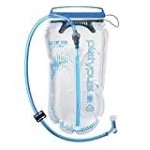 |
| Travel Bag Organizers A pro tip that we have used to great effect on Kilimanjaro are travel bag organizers, which can be used to source separate your gear for better backing and access. They also provide a great way to separate wet or dirty gear. |
 |
| Dry Bags Encountering rain on your Kilimanjaro trek is always a possibility, especially in the rainforest section of the hike. These types of bags can fit comfortably inside a duffle, are waterproof and can easily double as a source separator, like the travel cubes mentioned above. |
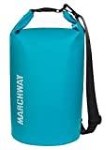 |
| Sleeping Bags and Accessories A warm sleeping bag is an absolute must for Mount Kilimanjaro, regardless of the season you plan to trek. |
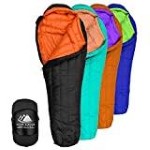 |
| Inflatable pillow (optional) A compact backpacking inflatable pillow that can quickly be inflated and deflated for storage is useful. Equally, you could just use a pile of clothes. |
 |
| Water Bottle A good water bottle or hydration bladder is a must. To ensure you remain well hydrated and stave off the symptoms of altitude sickness you need to drink between 2-3 litres of water each day. |
 |
| Water Purification Tablets Water on Kilimanjaro is collected from mountain streams by porters during your trek. It is very important that you treat this water with iodine purification tablets to avoid getting an upset stomach. |
 |
Other Accessories
Wet Wipes and Hand Sanitizer
Sweat-Resistant Sunscreen- Don’t just get any sunscreen. You are trekking to a high altitude where the sun intensity is high, so you will need a high SPF (greater than 30).
Camera- Bring a decent camera to capture the experience. Here is a great value SLR Camera, or if you want to go super light and capture awesome videos we recommend taking a GoPro.
Spare batteries- We recommend taking spare batteries for your headlamp and camera.
Ear plugs- If you are a light sleeper we recommend taking earplugs.
Small lock- Your duffle bag will be carried by porters. Typically your gear will be safe but we still recommend taking a bag lock to secure your belongings.
Energy bars- Taking energy bars on your trek is the easiest and most effective way to snack and keep your energy levels up. We suggest taking 2-3 energy bars for every day you are on the mountain.
Energy drink supplement- Many people don’t like the taste of water, especially after iodine has been added. An energy drink supplement will mask the taste of iodine as well as provide you with additional energy during your climb. We recommend using an isotonic or hypotonic Octane solution.
Blister Plasters- Trekking up to 5-7 hours a day can result in painful and debilitating blisters. Treat blisters early and take immediate measures to reduce friction.
Insect Repellent- A basic insect repellent is important. Make sure to get a reliable brand that has a high Deet content – greater than 90%
Trekking towel (optional)- A medium lightweight trekking towel to dry your hair, face and hands after a rainy days trekking.
